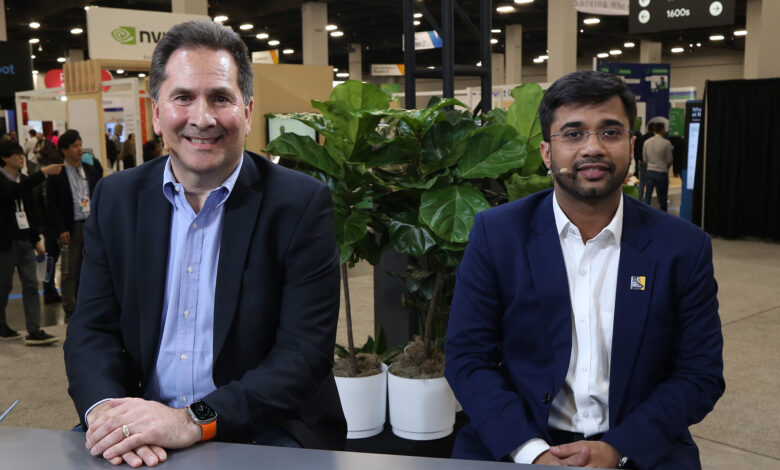Life sciences industry is changing drug development with AI

While much of what is being said about artificial intelligence can feel like enterprise buzzwords, applications with real-world impact are also on the horizon, especially in the life sciences and healthcare.
“Our motto at Insmed is: The patient is our North Star,” said Chris Colucci (pictured left), vice president of information technology at Insmed Inc., a company focused on developing and commercializing therapies for patients with rare diseases. “If you think about the past two years, how generative AI has taken us by storm, we started to look internally and say, how can we adapt our business process to help accelerate the drug development process, the discovery and eventually get product to patients?”
Colucci and Saurabh Mishra (pictured right), global leader of the Google Cloud business at Quantiphi Inc., spoke with theCUBE Research analysts Savannah Peterson and Rob Strechay at Google Cloud Next 2024, during an exclusive broadcast on theCUBE, SiliconANGLE Media’s livestreaming studio. They discussed the Insmed/Quantiphi partnership, the potential for AI to transform life sciences and the process of getting companies to adopt new technology. (* Disclosure below.)
Bringing life sciences on board with AI
The integration of AI into the life sciences sector is not just a future possibility, but a current reality with tangible impacts. Quantiphi’s innovative approach is poised to dramatically streamline and accelerate the clinical trial process, according to Mishra.
“We believe the entire clinical trial process can be shrunk to a large extent. Right now, if I talk from a Quantiphi perspective, what investments we are making to help customers … I think the first one is around having a dedicated applied AI research team,” Mishra said. “We have a hundred plus researchers who are continuously looking for latest research … and testing it out in publicly available data to see what is available for commercial use.”
The hardest part can be getting companies to commit financially to gen AI, in part because of the necessary safeguards around health products. Once the higher-ups in the company understand and agree to try out new technology, the path becomes much easier, according to Colucci.
“You start small, get buy-in from the top, build your roadmap,” he said. “Having a partner like Quantiphi bringing the life science expertise, helping us understand our problems along with the Google Cloud platform, it’s been a perfect collaboration.”
Although there is a long road ahead for adopting gen AI into life sciences, both Colucci and Mishra see huge potential down the line.
“It’ll save lives. It’s a matter of time. The technology needs to mature a little bit,” Mishra said. “A lot more solutions need to go on production, but I truly believe that this technology will change [how] life sciences as an industry operate and eventually help save lives.”
Here’s the complete video interview, part of SiliconANGLE’s and theCUBE Research’s coverage of Google Cloud Next 2024:
(* Disclosure: Quantiphi Inc. sponsored this segment of theCUBE. Neither Quantiphi nor other sponsors have editorial control over content on theCUBE or SiliconANGLE.)
Photo: SiliconANGLE
Your vote of support is important to us and it helps us keep the content FREE.
One click below supports our mission to provide free, deep, and relevant content.
Join our community on YouTube
Join the community that includes more than 15,000 #CubeAlumni experts, including Amazon.com CEO Andy Jassy, Dell Technologies founder and CEO Michael Dell, Intel CEO Pat Gelsinger, and many more luminaries and experts.
THANK YOU



